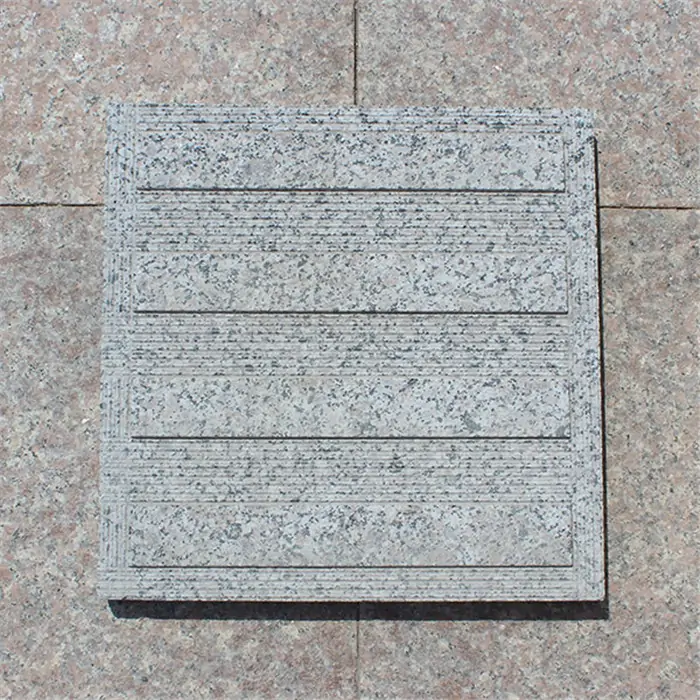


Granite tactile paving stones
Require A Quote
Granite tactile paving stones is used in street environments to help blind and partially sighted people access more safely, and is also a beautiful decoration in streetscapes. There are several types of tactile paving, including blister tactile paving, offset blister tactile paving, tactile paving spikes, directional tactile paving, hazard warning tactile paving, etc.
Our Granite implements strict standards for quality control of granite tactile paving, and we will check every item before packaging. The tolerance is generally +/-2mm for length and width, and +/-2mm for height.
All granite tactile paving products will be packaged in waterproof plywood pallets or crates with foam on the outside and PE bundles inside and outside.
| Materials | Light Grey, Silver Grey, Red, Dark Grey, Black, Yellow |
|
Processing Way |
Blister Paving: All sides are sawn, top surface flamed or sandblasted, edges on top are mini chamfered. Guidance Paving: All sides are sawn, top surface flamed or sandblasted, edges on top are mini chamfered. Offset Blister: All sides are sawn, top surface flamed or sandblasted, edges on top are mini chamfered. |
| Packaging Details | Waterproof plywood pallets or crates. |
| Production Capacity | 200 to 300 pieces per week. |
| Allowance | +/-2mm on length and width, +/-3mm on height. |
| Edges | Handmade tumbled or mini chamfered |
| MOQ | 27 Tons |
| Departure Port | Qingdao |
| Lead Time | 3 to 5 weeks upon the quantity and materials |
| Label | Customer own design |
| Breakages | We’ll check the quality before packing, please report breakages including quantity and pictures evidencing the damage scale to us within 1 month of receiving the goods. |
Why choose granite tactile paving stones?
Floors must not only be beautiful, but also easy to walk on. In public environments, they must also meet some statutory functional requirements, especially to be more accessible to people with disabilities. Important destination points such as walkways, stairs, information areas, elevators and toilets must be able to be discovered and found, even by people with disabilities.
This includes that walkways should be equipped with tactile and visual “guidance”, that danger areas in front of stairs and elevators should have warning signs, and that wet rooms should use light contrast so that toilets and sinks are easily detectable.
Guides and warning areas on the floor can be solved by offsetting materials and brightness contrast. Today, there are no specifications on how to design guides, other than a description or order that allows the best technical solution to be selected for the environment. There are many different solutions to choose from with granite tactile paving stones.
Granite tactile paving stones are used to take care of the needs of everyone to be able to orient themselves in public spaces. These are designed for the visually impaired and blind as part of a universal design strategy. Our tactile quite meets the requirements for the use of street primers and consists of a sloping direction with sinusoidal ribs on top and a sloping warning with a round ball on top.
With the development of the tram network and the continuous reconstruction of bus stops to make them more suitable for people with disabilities, tactile granite paving is becoming more and more common.






